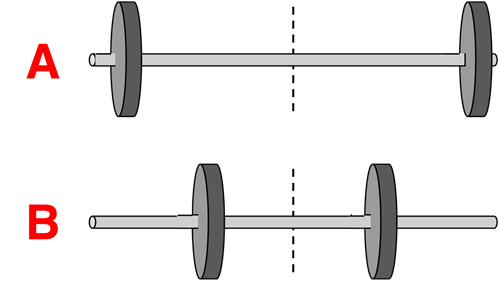The rotational inertia of an object or system of objects refers to the general resistance the object has to a change in its rotational state. The amount of rotational inertia an object possesses depends on how much mass it has and how that mass is distributed relative to the axis of rotation.
Getting your Trinity Audio player ready...
Hold down the T key for 3 seconds to activate the audio accessibility mode, at which point you can click the K key to pause and resume audio. Useful for the Check Your Understanding and See Answers.
Rotational Inertia - help1
There are two similar versions of this question. Here is one of the versions:
Version 1:
Two identical solid disks are arranged along a solid bar at different locations. For which arrangement – A or B – is the rotational inertia (I) about the vertical axis the greatest?

Try these links to The Physics Classroom Tutorial for more help with understanding the concept of rotational inertia:
Sorry. We hope to add resources in the future.